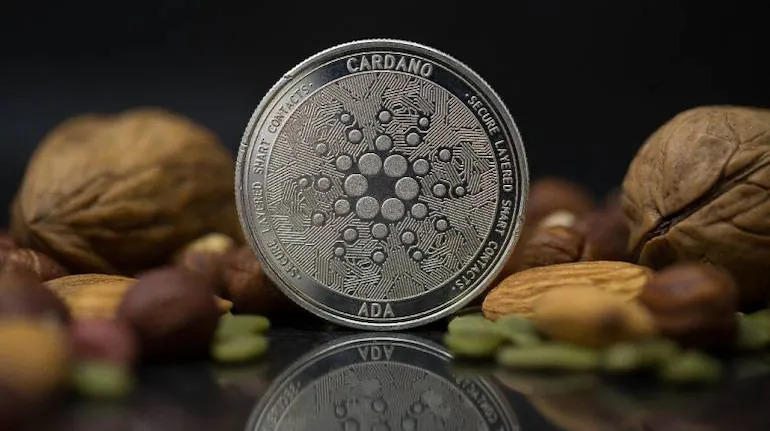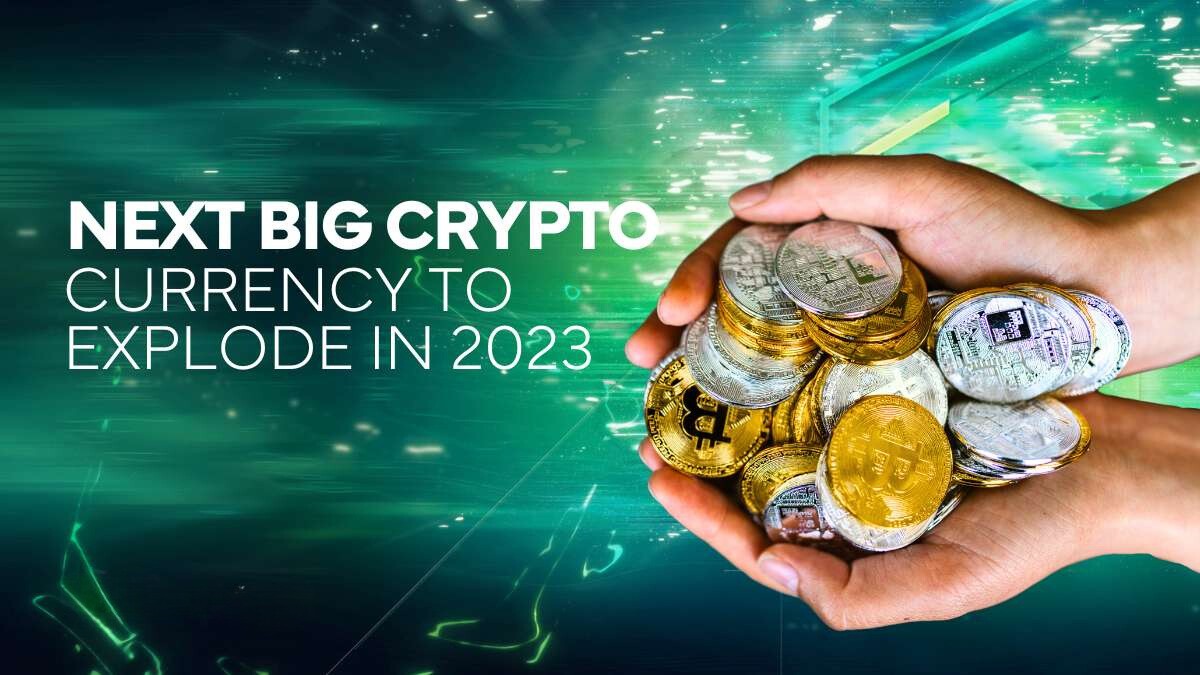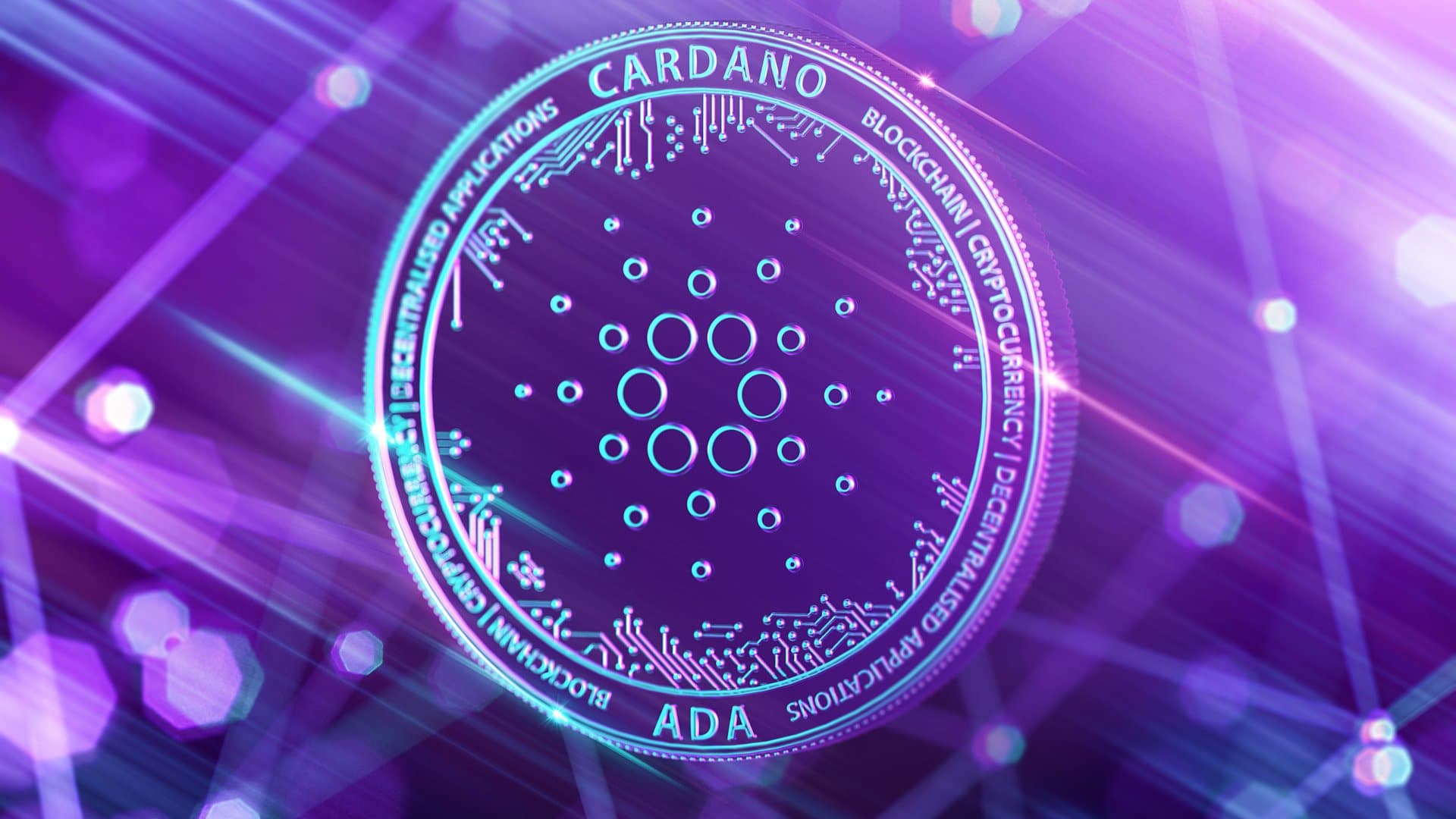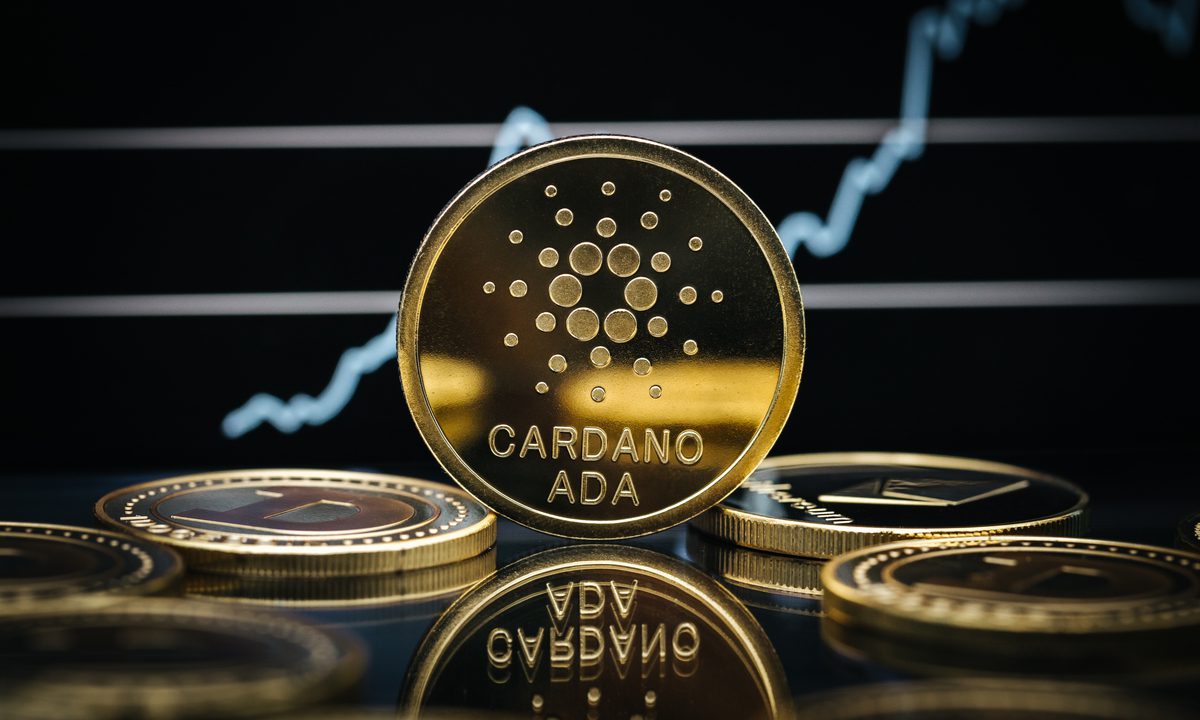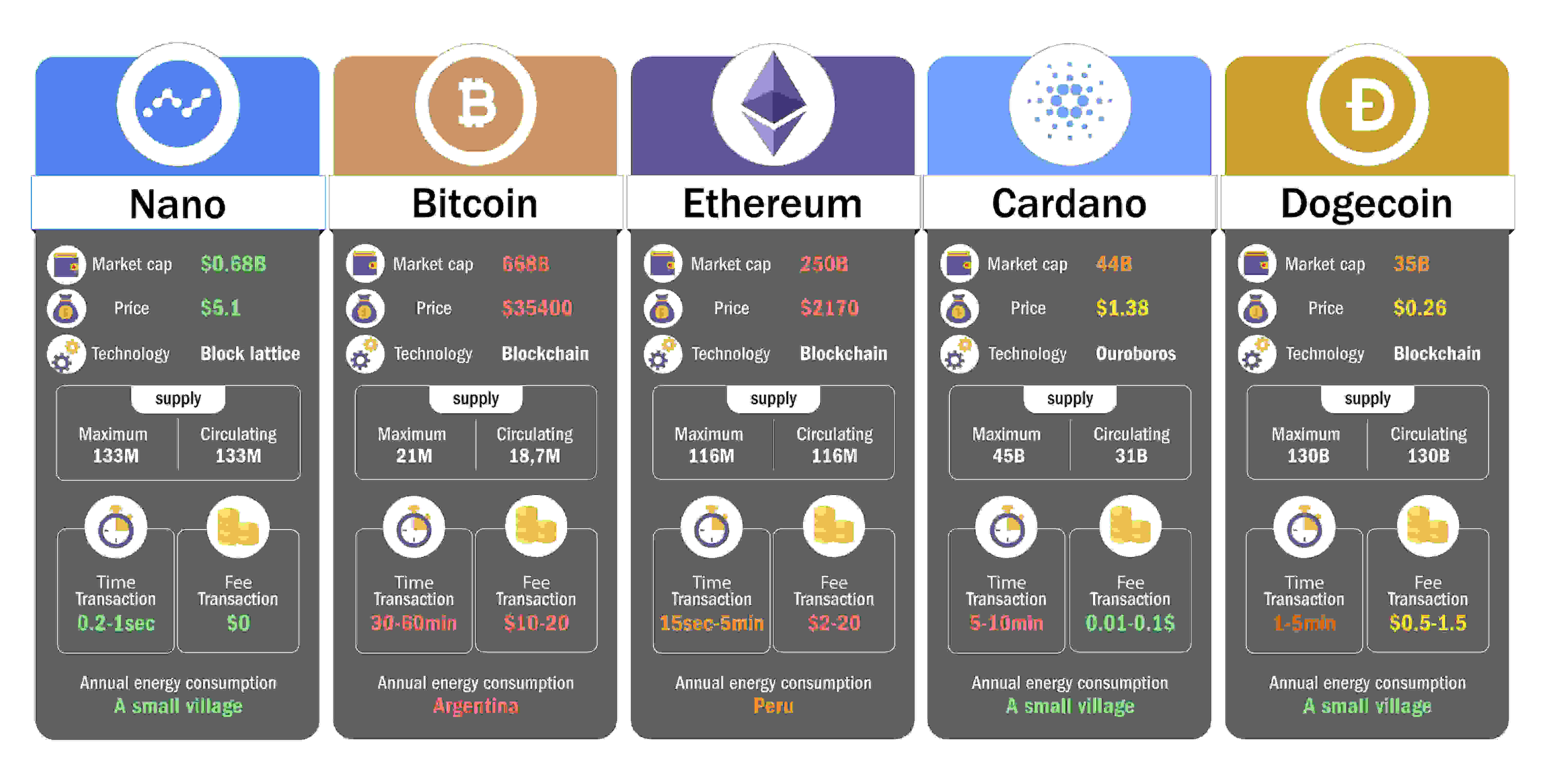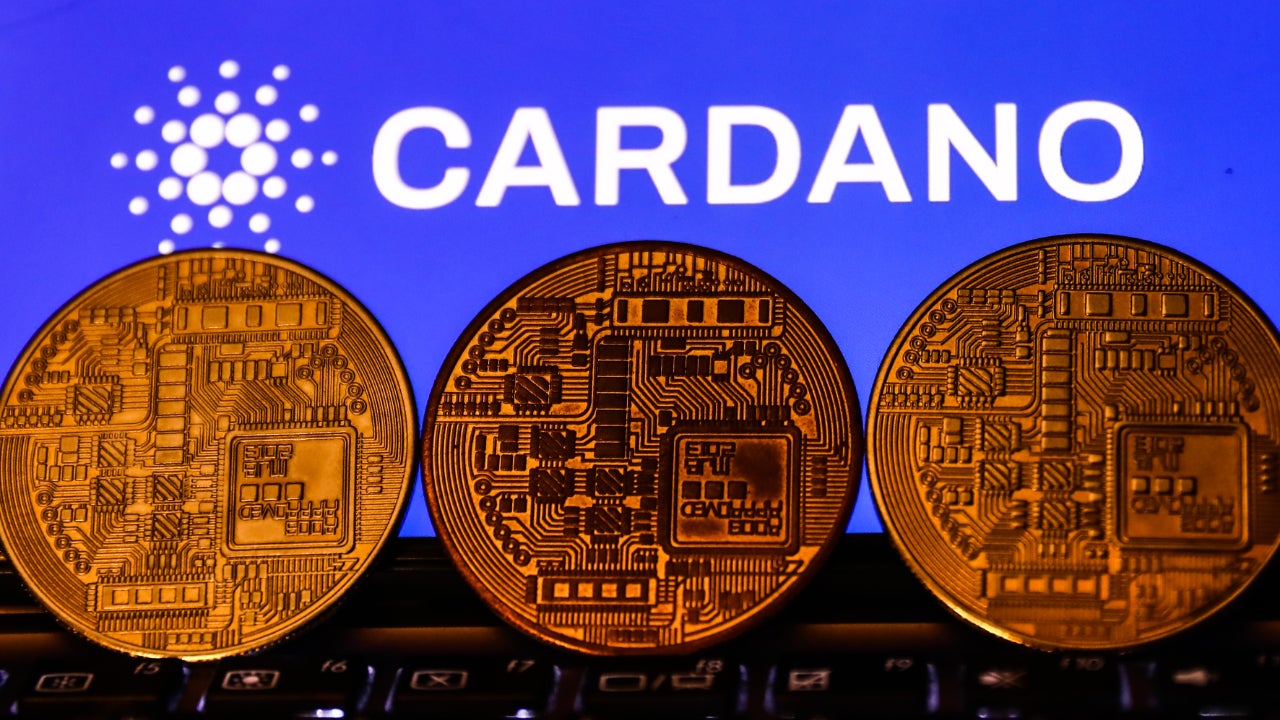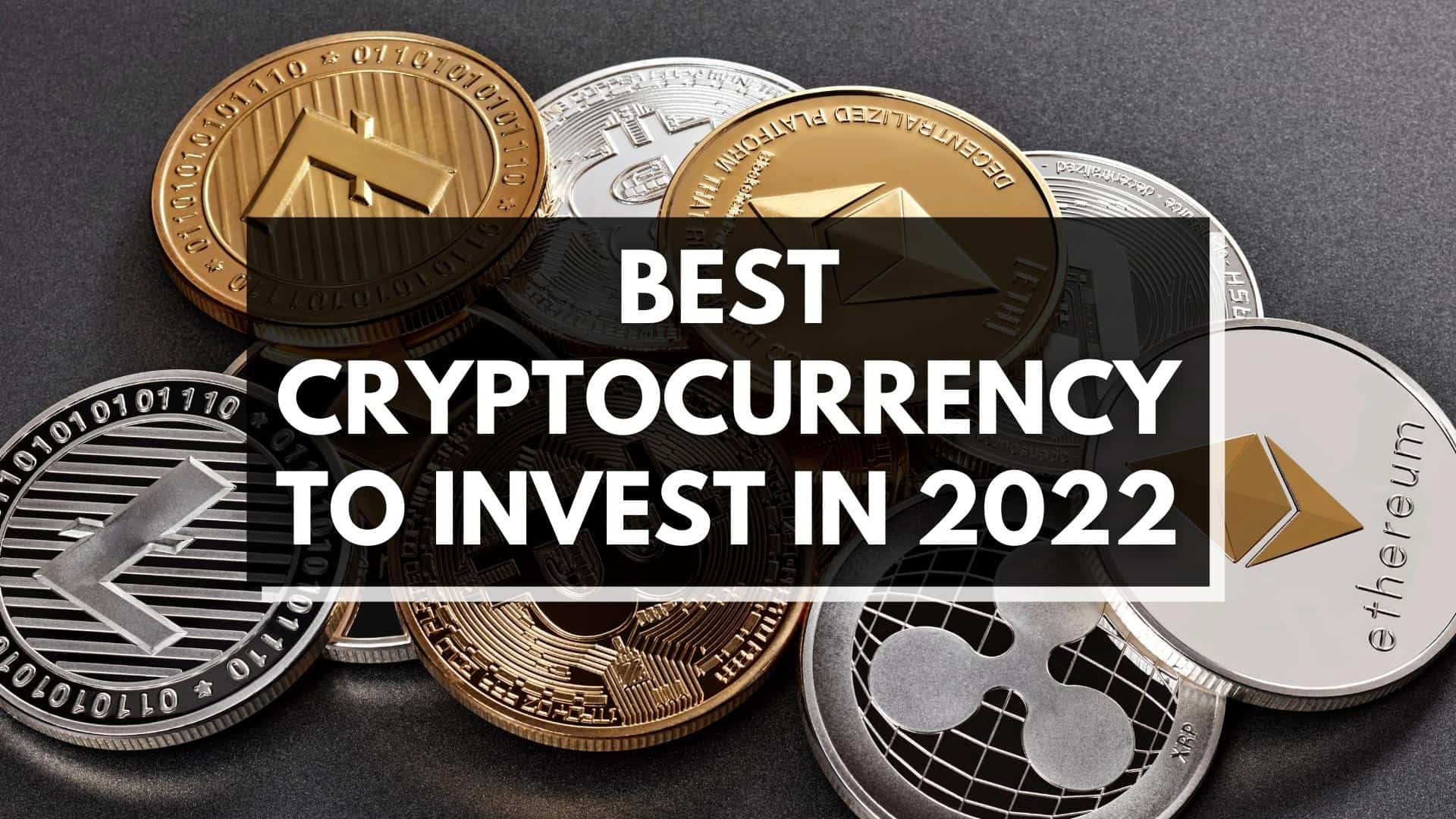Introduction
Welcome to the world of Cardano, a groundbreaking cryptocurrency that is revolutionizing the blockchain industry. With its advanced technology, innovative features, and commitment to sustainability, Cardano has captured the attention of investors and enthusiasts around the globe.
Cardano is not just a cryptocurrency; it is a comprehensive platform that aims to provide a more secure and sustainable ecosystem for financial transactions and applications. By combining cutting-edge technology and a robust governance model, Cardano sets itself apart from other cryptocurrencies.
Developed by a team of blockchain experts, mathematicians, and computer scientists, Cardano offers a truly decentralized and scalable blockchain solution. Its goal is to enable the development of smart contracts and decentralized applications (dApps) while ensuring security, efficiency, and sustainability.
In this article, we will explore the key features of Cardano, its history and evolution, and how it utilizes blockchain technology to deliver a unique and promising platform. We will also delve into the Cardano token, its consensus algorithm, governance structure, and its strategic partnerships. Finally, we will discuss how you can buy and hold Cardano to become a part of this exciting cryptocurrency ecosystem.
So, whether you are new to the world of cryptocurrencies or an experienced investor seeking the next promising project, join us on this journey as we unravel the world of Cardano and discover why it has gained such immense popularity in the crypto community.
What Is Cardano?
Cardano is a decentralized blockchain platform that aims to provide a secure and sustainable ecosystem for financial transactions and the development of decentralized applications. It was created by input from numerous leading academics and engineers around the world, making it a product of extensive research and scientific philosophy.
At its core, Cardano seeks to address the scalability, security, and sustainability issues prevalent in existing blockchain frameworks. By leveraging a layered architectural approach, it separates the settlement layer responsible for handling transactions from the computation layer responsible for running smart contracts.
Cardano introduces a unique consensus algorithm known as Ouroboros, which relies on a proof-of-stake mechanism. This means that instead of traditional mining, ADA holders can participate in the network’s operation and be rewarded based on their stake in the system. This approach significantly reduces energy consumption compared to proof-of-work systems, making Cardano more environmentally friendly.
One of Cardano’s standout features is its focus on peer-reviewed research and academic rigor. This ensures that all changes and updates to the platform are thoroughly reviewed before implementation. By leveraging formal verification methods, Cardano aims to improve security and reliability throughout the system.
Cardano also emphasizes a strong governance model, allowing ADA holders to actively participate in the decision-making process. Through on-chain voting, stakeholders can propose and vote on protocol upgrades, funding projects, and resolving disputes. This democratic approach ensures that the community has a voice in shaping the future direction of Cardano.
Furthermore, Cardano is designed to be interoperable with other blockchain platforms, allowing for seamless integration and data exchange between different networks. This enables developers to build decentralized applications that can interact and communicate with other blockchain ecosystems, increasing the potential for innovation and collaboration.
By striving for scientific rigor, scalability, sustainability, and strict governance, Cardano sets itself apart as a robust and forward-thinking blockchain platform. Its innovative approach and commitment to excellence continue to attract attention and garner support from individuals and organizations worldwide. As we explore further, we will gain a deeper understanding of Cardano’s key features and how they contribute to its unique value proposition.
History of Cardano
Cardano’s journey began in 2015, led by a team of renowned blockchain experts and researchers. It was co-founded by Charles Hoskinson, who previously co-founded Ethereum, and Jeremy Wood, with the goal of creating a more secure and sustainable blockchain platform.
The development of Cardano can be attributed to Input Output Hong Kong (IOHK), a technology company dedicated to researching and developing blockchain solutions. IOHK was selected to oversee the technical development of Cardano through a partnership with the Cardano Foundation and Emurgo.
The project went through an extensive research and development phase, with input from leading academics and scientists from universities around the world. The team behind Cardano sought to combine scientific philosophy, peer-reviewed research, and engineering best practices to build a reliable and robust blockchain platform.
Cardano launched its mainnet, called Byron, in September 2017. This marked a significant milestone in the project’s history, as it allowed users to transact and hold ADA, the native cryptocurrency of Cardano.
Since then, Cardano has undergone several major updates and milestones to enhance its functionality and scalability. These updates include the Shelley era, which introduced a more decentralized consensus mechanism, allowing ADA holders to actively participate in the network’s operation.
Cardano continues to evolve, with ongoing improvements and updates planned for the future. The development roadmap includes the Goguen era, which aims to introduce smart contract functionality to the platform. This will enable developers to build and deploy decentralized applications on Cardano, further expanding its use cases and potential.
Throughout its history, Cardano has gained recognition and garnered support from the blockchain community and beyond. Its focus on scientific research, rigorous development practices, and commitment to sustainability have made it a respected and promising blockchain project.
As Cardano continues to progress and achieve key milestones, it solidifies its position in the crypto space as a transformative platform with real-world applications. The history of Cardano is a testament to its dedication to excellence, innovation, and the pursuit of a better blockchain ecosystem.
Key Features of Cardano
Cardano boasts several key features that set it apart from other blockchain platforms. These features contribute to its unique value proposition and make it an attractive choice for developers and users alike. Let’s explore some of the key features of Cardano:
1. Layered Architecture: Cardano utilizes a layered architectural approach, separating the settlement layer (Cardano’s cryptocurrency Ada) from the computation layer. This design allows for flexibility, scalability, and modularity in developing and producing different types of applications.
2. Ouroboros Consensus Algorithm: Cardano employs the Ouroboros consensus algorithm, a provably secure and energy-efficient proof-of-stake mechanism. This consensus algorithm ensures ADA holders can participate in securing the network and earning rewards for their stake, while also minimizing energy consumption.
3. Formal Verification: Cardano emphasizes a scientific and research-driven approach to development and security. By utilizing formal verification methods, Cardano aims to prevent coding errors and vulnerabilities, ensuring higher security and reliability for smart contracts and dApps.
4. Sustainability and Governance: Cardano emphasizes a strong governance model that allows ADA holders to actively participate in decision-making. Through on-chain voting, stakeholders have the ability to propose and vote on system upgrades, funding projects, and resolving disputes. This democratic approach ensures the platform’s sustainability and community-driven evolution.
5. Interoperability: Cardano is designed to be interoperable with other blockchain platforms. This feature enables seamless integration and data exchange between different networks, expanding the potential for collaboration and innovation among developers and users.
6. Scalability: Cardano aims to address the scalability issues that plague many blockchain platforms. Through its unique layering architecture and ongoing development efforts, Cardano seeks to improve scalability while maintaining security and efficiency.
7. Smart Contract Support: The upcoming Goguen era of Cardano will bring support for smart contracts. This will enable developers to build and deploy decentralized applications (dApps) and execute self-executing contracts, expanding the use cases and potential applications of Cardano.
By combining these key features, Cardano offers a robust and forward-thinking blockchain platform that aims to redefine the possibilities of decentralized technology. With a focus on security, scalability, sustainability, and democratic governance, Cardano is poised to create a blockchain ecosystem that is efficient, reliable, and inclusive for all stakeholders involved.
Cardano’s Blockchain Technology
Cardano leverages advanced blockchain technology to provide a secure, scalable, and sustainable platform for decentralized applications and financial transactions. It employs innovative mechanisms that address the limitations of traditional blockchain frameworks. Let’s explore the key aspects of Cardano’s blockchain technology:
1. Layered Architecture: Cardano follows a layered architecture that separates the settlement layer and the computation layer. This design optimizes the scalability and flexibility of the platform while ensuring the security and integrity of transactions.
2. Ouroboros Consensus Algorithm: Cardano utilizes the Ouroboros proof-of-stake (PoS) consensus algorithm, which ensures the security and efficiency of the network. Through this mechanism, Ada holders can participate in the network’s governance and validation process, earning rewards in proportion to their stake.
3. Hydra Scaling Solution: To address scalability challenges, Cardano has introduced the Hydra scaling solution. Hydra is a layer-2 scaling protocol that enables the simultaneous processing of multiple transactions within the Cardano blockchain, significantly increasing its transaction throughput and capacity.
4. Formal Verification: Cardano places a strong emphasis on formal verification—a mathematical technique that rigorously analyzes and verifies the correctness of smart contracts and protocols. By applying formal verification methods, Cardano aims to enhance security and reliability, reducing the risk of bugs and vulnerabilities.
5. Sidechains: Cardano is actively exploring the implementation of sidechains, which are separate chains connected to the main blockchain. Sidechains allow for greater flexibility and enable the execution of specific functions or applications without congesting the main blockchain.
6. Metadata Framework: Cardano incorporates a metadata framework that enables the attachment of relevant data to transactions. This feature is particularly useful for compliance requirements, enabling users to add specific information to transactions while maintaining privacy and data integrity.
7. Native Token (Ada): The native cryptocurrency of Cardano, Ada, serves as a medium of exchange and a means to participate in the network’s governance. Ada holders can stake their tokens to validate transactions and receive rewards, contributing to the security and decentralization of the network.
Through these technological advancements, Cardano aims to deliver a blockchain platform that not only addresses the scalability and security challenges of existing solutions but also prioritizes sustainability and innovation. By combining these features, Cardano provides a robust foundation for the development of decentralized applications and the execution of secure, transparent, and efficient financial transactions.
The Cardano Token (ADA)
ADA is the native cryptocurrency of the Cardano blockchain, serving as a digital asset that facilitates transactions and drives the platform’s economy. As the core element of Cardano’s ecosystem, ADA plays a crucial role in the network’s governance, staking, and sustainability mechanisms. Here’s what you need to know about ADA:
Utility and Use Cases:
ADA serves multiple purposes within the Cardano ecosystem. Firstly, it is used as a medium of exchange, allowing users to send and receive value on the network. Additionally, ADA holders can participate in the network’s governance by staking their tokens and voting on key protocol upgrades and proposals. This democratic governance structure grants ADA holders the power to shape the future direction of Cardano.
Staking and Rewards:
Cardano utilizes a proof-of-stake consensus mechanism, allowing ADA holders to stake their tokens to participate in the network’s operation and secure the blockchain. By delegating or operating a stake pool, ADA holders can earn rewards based on their stake. This incentivizes token holders to actively participate in the network’s security and decentralization, fostering a more robust and sustainable ecosystem.
Supply and Distribution:
The total maximum supply of ADA is set at 45 billion tokens. However, at the time of writing, only a fraction of the total supply is in circulation. ADA tokens were initially distributed through a public sale in 2015 and subsequent fundraising rounds. The remaining ADA tokens are gradually released through a process known as “minting” as rewards for staking and securing the network.
Ada Lovelace and Lovelace:
In honor of Ada Lovelace, a 19th-century mathematician and pioneer of computer programming, Cardano has introduced a smaller unit of measurement called Lovelace. One ADA is equivalent to 1 million Lovelace. This naming convention showcases Cardano’s commitment to celebrating historical figures who have made significant contributions to the world of science and technology.
Market and Exchanges:
Since its launch, ADA has gained significant traction and has established itself as one of the top cryptocurrencies in terms of market capitalization. ADA can be purchased and traded on various cryptocurrency exchanges, providing liquidity and accessibility to investors and users worldwide.
As Cardano continues to evolve and grow, the importance and utility of ADA within the ecosystem will only increase. ADA’s multi-faceted role in facilitating transactions, governing the network, and incentivizing participation makes it an integral part of the Cardano ecosystem.
Cardano’s Consensus Algorithm
Cardano employs a unique consensus algorithm known as Ouroboros, which is based on a proof-of-stake (PoS) mechanism. This innovative approach offers several advantages over traditional proof-of-work (PoW) mechanisms, such as those used by Bitcoin. Let’s delve into the details of Cardano’s consensus algorithm:
Ouroboros: A Provably Secure Algorithm
Ouroboros is a rigorously designed and mathematically proven algorithm that ensures the security and efficiency of the Cardano blockchain. It divides time into epochs, which consist of multiple slots where transactions are confirmed and added to the blockchain.
Proof-of-Stake (PoS) Mechanism
Unlike proof-of-work algorithms that rely on energy-intensive mining, Ouroboros allows ADA holders to participate in the network’s operation and validation process based on the number of tokens they hold. This means that the more ADA one holds, the higher their chances of being chosen to validate a block.
Epochs and Slot Leaders
During each epoch, a set of slot leaders is predetermined based on a lottery system weighted by stake. These slot leaders are responsible for creating and validating blocks within their assigned slots. This decentralized approach ensures that the network remains secure and prevents any individual or group from controlling the blockchain.
Security and Efficiency
Ouroboros offers a high level of security through the use of cryptographic techniques and incentives. Any attempt to compromise the blockchain would require a majority stake, which is economically impractical and highly unlikely. Additionally, the PoS mechanism reduces energy consumption compared to PoW algorithms, making Cardano more environmentally friendly.
Delegated Proof-of-Stake (dPoS) Mechanism: Ouroboros Praos
Cardano’s Ouroboros Praos is an enhanced version of the original Ouroboros algorithm. It introduces a delegated proof-of-stake mechanism that allows ADA holders to delegate their stake to a stake pool. These stake pools are responsible for creating and validating blocks on behalf of ADA holders, simplifying the process and reducing the barrier to participation.
Continuous Evolution
The Cardano team continually enhances and improves the Ouroboros consensus algorithm. Research and development efforts are focused on optimizing scalability, increasing security, and introducing new features. This commitment to ongoing improvement ensures that Cardano remains at the forefront of blockchain technology.
Cardano’s Ouroboros consensus algorithm, along with its continuous evolution and commitment to security and efficiency, sets the stage for a robust and sustainable blockchain platform. By leveraging the power of proof-of-stake, Cardano provides a more environmentally friendly and inclusive approach to consensus, ensuring the long-term success and viability of the network.
Governance and Sustainability
Cardano’s governance and sustainability model sets it apart from other blockchain platforms, empowering the community and ensuring the long-term success of the ecosystem. Let’s dive into the key aspects of Cardano’s governance and sustainability:
Decentralized Governance:
Cardano aims to be a truly decentralized blockchain platform, and this extends to its governance model. ADA holders play a significant role in decision-making through on-chain voting. They can propose and vote on protocol upgrades, funding projects, and resolving disputes. This democratic approach ensures that the Cardano community has a say in shaping the platform’s future.
Treasury System and Funding:
Cardano operates a treasury system, where a portion of each transaction fee is allocated to fund the development and maintenance of the ecosystem. This self-sustainable funding model allows for continuous improvement without relying on external funding sources. The funds are managed transparently and are subject to community oversight, ensuring responsible and accountable allocation.
Development Partnerships:
Cardano has established strategic partnerships and collaborations with leading organizations and academic institutions worldwide. These partnerships aim to foster innovation, conduct research, and develop real-world use cases of Cardano’s technology. By leveraging the expertise and resources of these partners, Cardano continues to evolve and address complex challenges.
Sustainability and Peer-Reviewed Research:
Cardano places a strong emphasis on scientific research, peer-reviewed protocols, and formal verification. By involving leading academics and experts, Cardano ensures that changes and updates to the platform are thoroughly researched, reviewed, and mathematically proven for correctness. This approach enhances the security, reliability, and sustainability of the network.
Regulatory Compliance:
Cardano acknowledges the importance of regulatory compliance to ensure its long-term viability. By operating within legal frameworks and collaborating with regulators, Cardano aims to provide a secure and compliant platform for individuals, businesses, and institutions to build and operate decentralized applications.
Sustainability and Environmental Consciousness:
Cardano’s proof-of-stake consensus algorithm significantly reduces energy consumption compared to traditional proof-of-work systems. By minimizing the energy requirements for securing the network, Cardano exemplifies its commitment to sustainability and environmental consciousness in building the blockchain of the future.
Overall, Cardano’s governance and sustainability model prioritizes community involvement, responsible resource allocation, ongoing research, and regulatory compliance. By empowering ADA holders to participate in decision-making, fostering partnerships, and ensuring the long-term sustainability of the ecosystem, Cardano paves the way for a decentralized and sustainable blockchain platform.
Cardano’s Partnerships
Cardano has cultivated strategic partnerships with various organizations, academic institutions, and industry leaders. These partnerships play a vital role in driving innovation, research, and adoption of Cardano’s technology. Let’s explore some of the notable partnerships that have shaped the Cardano ecosystem:
1. IOHK (Input Output Hong Kong): IOHK, the technology company behind Cardano, oversees the development and implementation of the platform. IOHK’s expertise in blockchain technology and research has been instrumental in shaping Cardano’s vision and scientific approach.
2. Cardano Foundation: The Cardano Foundation is an independent entity that focuses on the long-term development and adoption of the Cardano ecosystem. It provides oversight and guidance, supports community engagement, and facilitates partnerships to promote the growth and sustainability of Cardano.
3. Emurgo: Emurgo is a global blockchain technology company that drives adoption of Cardano by providing commercial solutions, promoting entrepreneurial ventures, and fostering blockchain education. Emurgo actively explores and supports the integration of Cardano into real-world use cases across industries.
4. African Partnership: Cardano has initiated partnerships with several African countries, including Ethiopia, to drive blockchain adoption and address real-world challenges. These initiatives aim to establish blockchain-based solutions for identity management, supply chain, agriculture, and financial inclusion, transforming the lives of millions of individuals across the continent.
5. University Collaborations: Cardano has formed collaborations with several renowned academic institutions, such as the University of Edinburgh in the UK and the Tokyo Institute of Technology in Japan. These partnerships enable interdisciplinary research, the exchange of knowledge, and the exploration of new applications for Cardano’s technology.
6. Enterprise Collaborations: Cardano has engaged in collaborations with various enterprises, including New Balance, to explore blockchain implementations in supply chain management and intellectual property protection. These partnerships showcase the potential for Cardano’s technology in enhancing transparency, efficiency, and security across industries.
7. Government Collaborations: Cardano has engaged in discussions and collaborations with several governments worldwide, including Georgia and Mongolia. These partnerships aim to leverage blockchain technology for public administration, land ownership, and other government services, enhancing efficiency, accountability, and transparency.
These partnerships demonstrate Cardano’s commitment to collaborative and inclusive growth, aiming to foster innovation, drive real-world adoption, and create a robust ecosystem. By collaborating with industry leaders, academic institutions, governments, and enterprises, Cardano continues to explore new avenues for blockchain implementation, harnessing the potential of its technology to transform industries and improve lives globally.
How to Buy and Hold Cardano
If you’re interested in buying and holding Cardano’s native cryptocurrency, ADA, you can follow these steps to get started:
Step 1: Choose a Cryptocurrency Exchange:
Start by selecting a reputable cryptocurrency exchange that supports ADA. Some popular options include Binance, Coinbase, Kraken, and Bittrex. Ensure that the exchange is available in your country and offers a user-friendly interface.
Step 2: Create an Account:
Sign up for an account on your chosen exchange platform. You will typically need to provide your email address, create a password, and complete any necessary identity verification processes as required by the exchange.
Step 3: Deposit Funds:
Once your account is set up and verified, deposit funds into your exchange account. Most exchanges support various deposit methods, such as bank transfers, credit cards, or cryptocurrency deposits from another wallet.
Step 4: Locate ADA:
Search for ADA or Cardano on the exchange’s trading platform. You may need to navigate to the ADA trading pairs section. Common trading pairs include ADA/USD, ADA/BTC, and ADA/ETH, among others.
Step 5: Place an Order:
Decide on the amount of ADA you wish to purchase and choose your preferred order type, such as market or limit order. A market order will execute your purchase immediately at the current market price, while a limit order allows you to set a specific price at which you are willing to buy ADA.
Step 6: Secure Your ADA:
Once your order is filled, the ADA tokens you purchased will appear in your exchange account. To ensure the security of your investment, consider transferring your ADA to a personal wallet that you control. Wallet options include Daedalus, Yoroi, or hardware wallets like Ledger or Trezor.
Step 7: Monitor and Hold:
After securing your ADA in a wallet, you can choose to hold it for the long term or actively monitor the market and make trading decisions. It’s important to stay informed about Cardano’s news, updates, and overall market trends to make informed investment decisions.
Step 8: Staking ADA:
If you want to actively participate in securing the Cardano network and earning rewards, consider staking your ADA. Many wallets and exchanges offer staking options, allowing you to delegate your ADA to a stake pool or operate your own. By staking, you contribute to the network’s security and earn additional ADA as rewards.
Please keep in mind that buying and holding cryptocurrencies, including ADA, carries risks, and it’s important to do thorough research and understand the market before making any investment decisions. Consider consulting with a financial advisor for personalized investment guidance.
Conclusion
Cardano stands out as a remarkable blockchain platform that combines innovative technology, rigorous research, and a commitment to sustainability and governance. With its layered architecture, Ouroboros consensus algorithm, and emphasis on peer-reviewed research, Cardano provides a solid foundation for building decentralized applications and executing secure and transparent transactions.
Through its partnerships with academic institutions, enterprises, and governments, Cardano continues to push the boundaries of blockchain adoption and collaboration. These partnerships drive innovation, explore real-world use cases, and foster the growth of the Cardano ecosystem.
The native cryptocurrency, ADA, plays a vital role in the Cardano ecosystem. ADA holders participate in the network’s governance, stake their tokens for rewards, and facilitate transactions within the ecosystem. ADA’s utility and use cases continue to expand as Cardano evolves and attracts more users and developers to the platform.
Furthermore, Cardano’s governance and sustainability model empowers its community, ensuring that decisions are made collectively and resources are allocated responsibly for the long-term success of the platform. The commitment to scientific rigor, environmental consciousness, and regulatory compliance underpin Cardano’s vision for a secure, scalable, and sustainable blockchain ecosystem.
As Cardano progresses through its development roadmap and introduces new features like smart contracts through the Goguen era, it is poised to become a leading blockchain platform that challenges the status quo and drives global adoption of decentralized technology.
Whether you are an investor seeking a promising cryptocurrency, a developer looking to build decentralized applications, or simply an enthusiast interested in exploring the potential of blockchain technology, Cardano offers an exciting journey into a future of secure and sustainable innovation.







